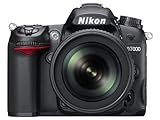Nikon D7000 16.2MP DX-Format CMOS Digital SLR with 3.0-Inch LCD and 18-105mm f/3.5-5.6 AF-S DX VR ED Nikkor Lens
nikon d200 for SALES ONLINE BLACK FRIDAY DEALS 2011-CHECK SPECIAL PRICES!!! ...

Nikon D7000 16.2MP DX-Format CMOS Digital SLR with 3.0-Inch LCD and 18-105mm f/3.5-5.6 AF-S DX VR ED Nikkor Lens
nikon d200
cheapest deals price black friday's deals and discount
CHECK COMPARE PRICES for BEST BUY and GET SPECIAL DISCOUNT!!! ABOUT Nikon D7000 16.2MP DX-Format CMOS Digital SLR with 3.0-Inch LCD and 18-105mm f/3.5-5.6 AF-S DX VR ED Nikkor Lens
::nikon d200::ONLINE SHOPPING...
!!!!!~~CHECK HERE NOW~~!!!!!
performance parts for car-Buy Autoparts










